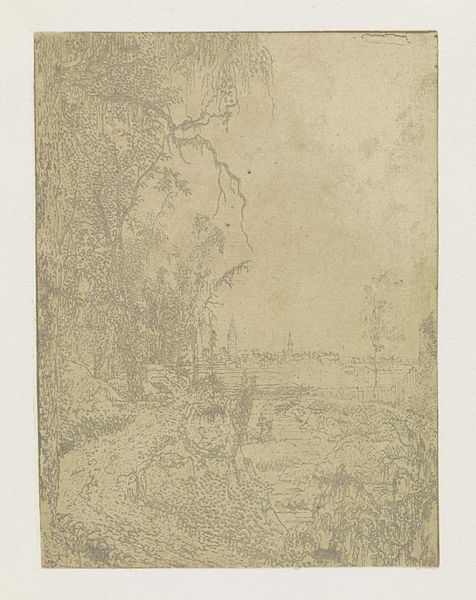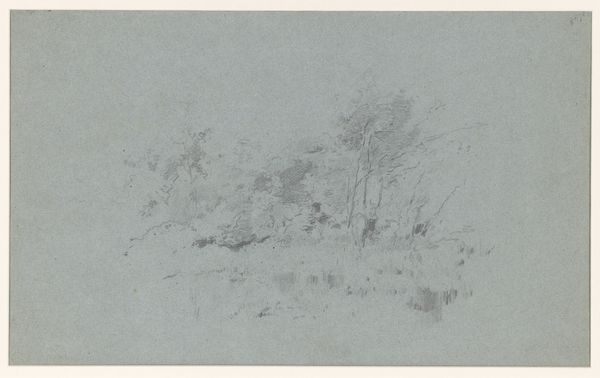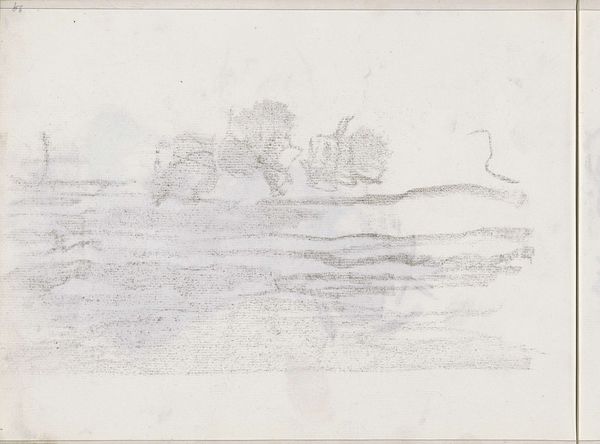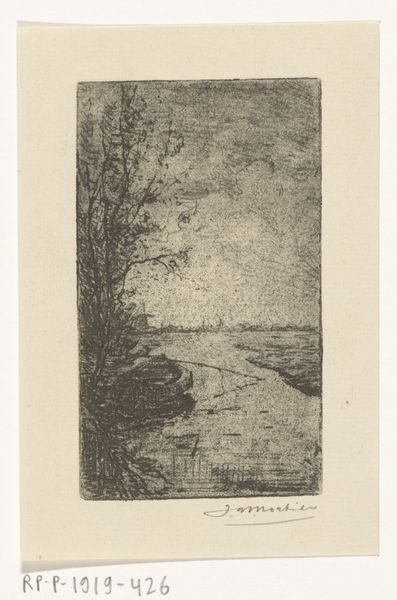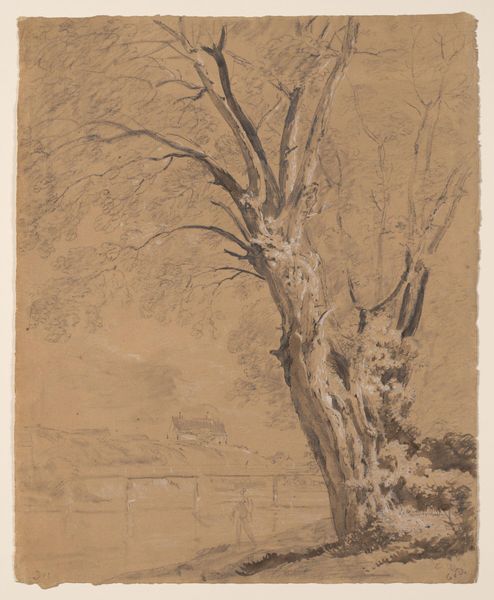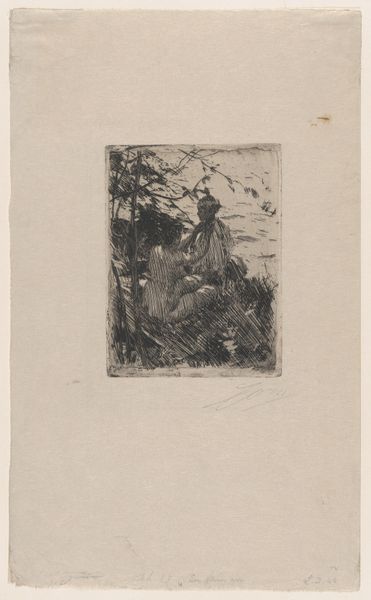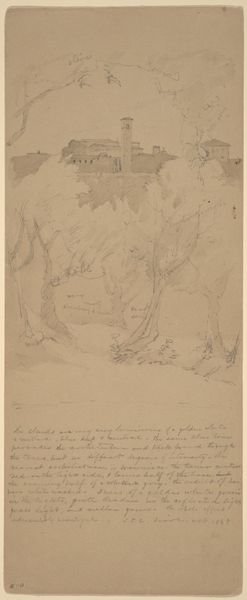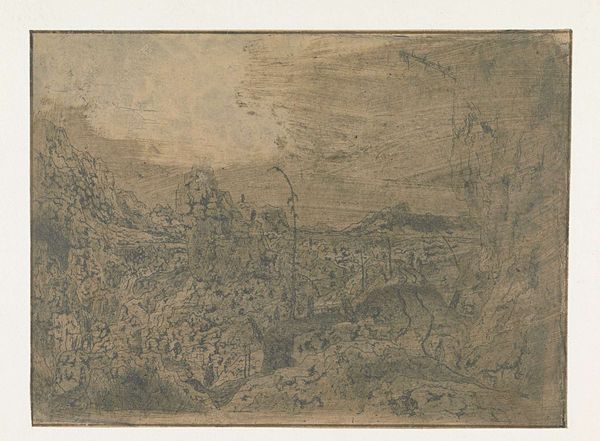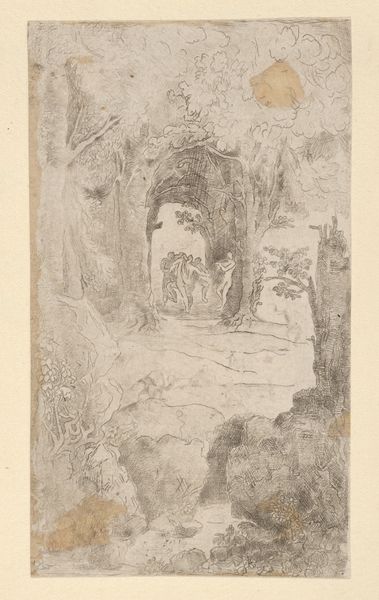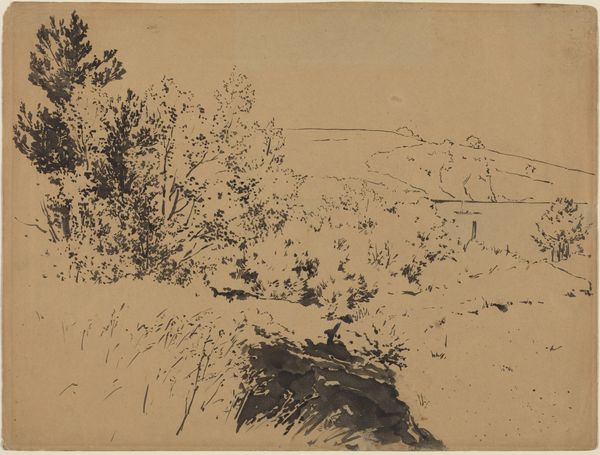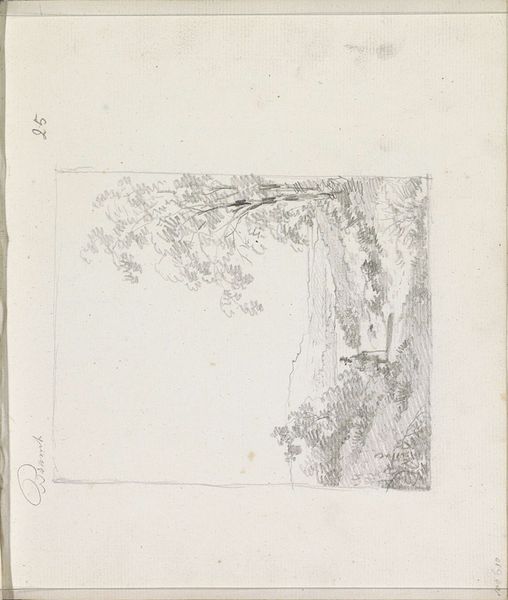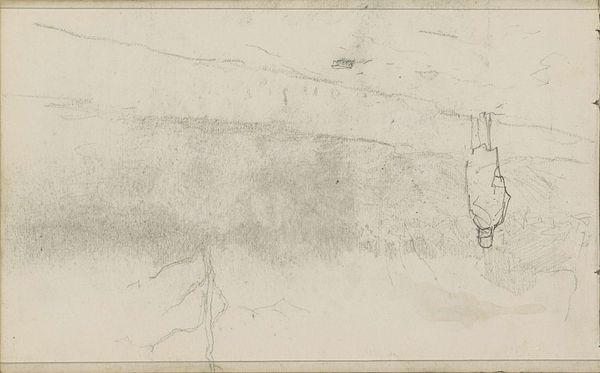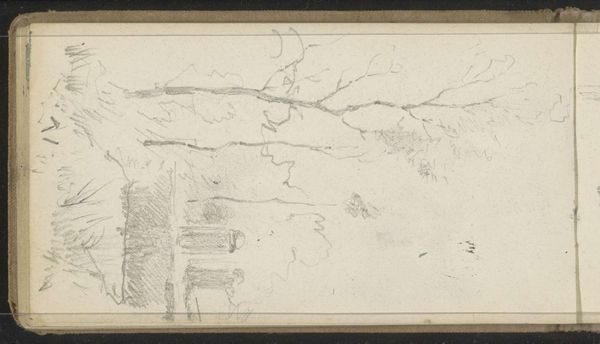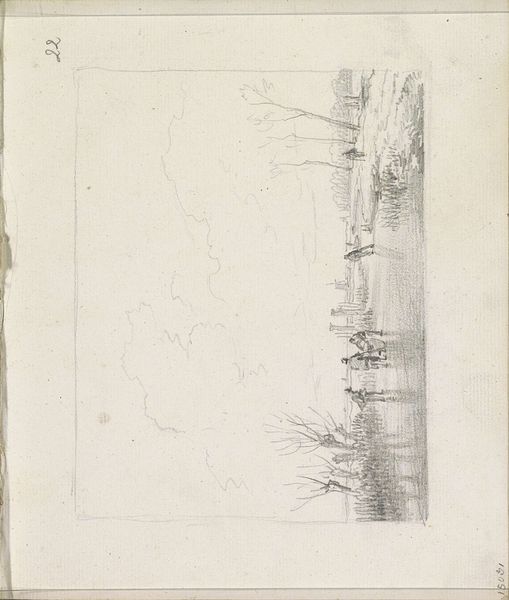
drawing, print, etching, paper
#
drawing
#
baroque
# print
#
etching
#
landscape
#
paper
#
cityscape
Dimensions: height 134 mm, width 102 mm
Copyright: Rijks Museum: Open Domain
Curator: Look at this remarkable print, “A Road Bordered by Trees, a City in the Background,” created by Hercules Segers between 1622 and 1625. It's an etching on paper, currently held in the Rijksmuseum. Editor: It's…dreamlike, isn't it? Hazy. The whole scene feels veiled, like a half-remembered memory. The tones, even the line work, is delicate almost to the point of being fragile. Curator: Indeed. Segers was a master of mood. Consider the overarching theme. The cityscape emerges in the distance. How do you think this contrast plays into the psychological impact of the work? Editor: I’d guess that it’s intentional to set a tone of isolation or the loneliness of existence against a backdrop of society, don’t you think? A traveler leaves nature for society and loses something... or perhaps gains something, maybe a sense of connection, although to my eye there is not sense of gain there. Curator: Precisely. It encapsulates the tension between the allure and alienation inherent in urban life during the Baroque era. Also, let's not ignore the symbolism in the trees. Their forms can mirror human figures, inviting projections of anxieties or hopes onto nature itself. The trees can be seen as barriers in front of you, blocking one’s path. Editor: The color also gives the effect a faded view to another space, like memory from someone long past who is losing recollection of it. Curator: Indeed, Segers manipulated printmaking techniques to evoke unique, melancholic atmospheres which reflects his vision. There is no happiness there. Editor: To be honest, all of this makes the work very impressive, even if it doesn’t make it especially fun to look at! Curator: The landscape carries somber, even fatalist underpinnings. The appeal resides more in intellectual and aesthetic provocation than any readily accessible pleasantness. Editor: That explains why this little print resonates beyond its size or simple composition, don't you agree? Curator: Absolutely. Segers’ exploration into human conditions transcends his own time.
Comments
No comments
Be the first to comment and join the conversation on the ultimate creative platform.
